|
ID |
Nickname |
Country / City |
Languages |
Taxonomies |
Comment |
Project / Group |
Map |
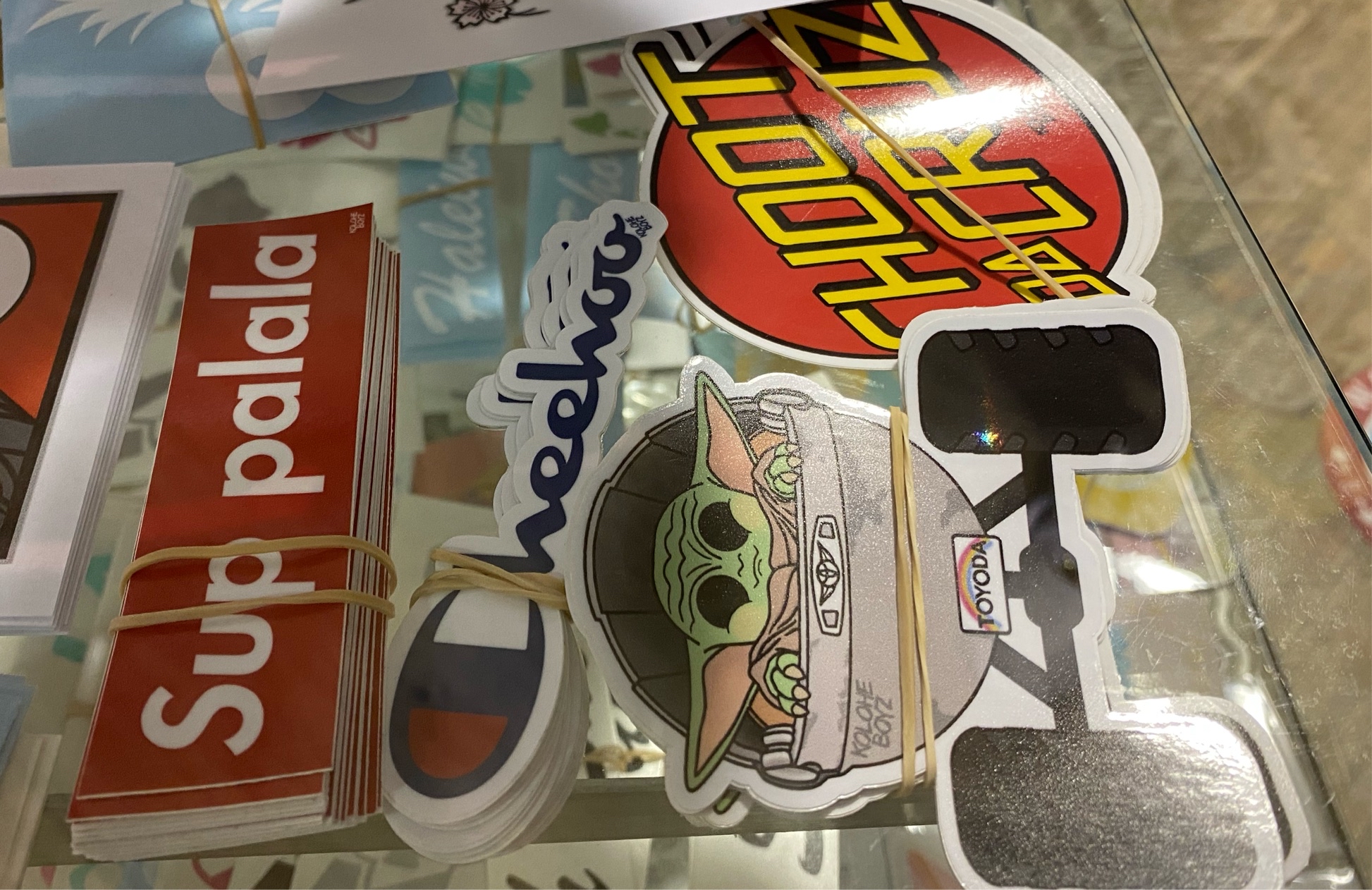
|
46073
|
|
United States
Honolulu
|
|
|
AJR - Check in #2. This picture showcases the use of the Pidgin phrases “Sup palala” and “Cheeehoo” and “Shoot Da Cruz”. I would say these products are geared more towards a local audience as tourists may not be aware of the meaning of these phrases
|
Multilingual Hawaiʻi
|
|
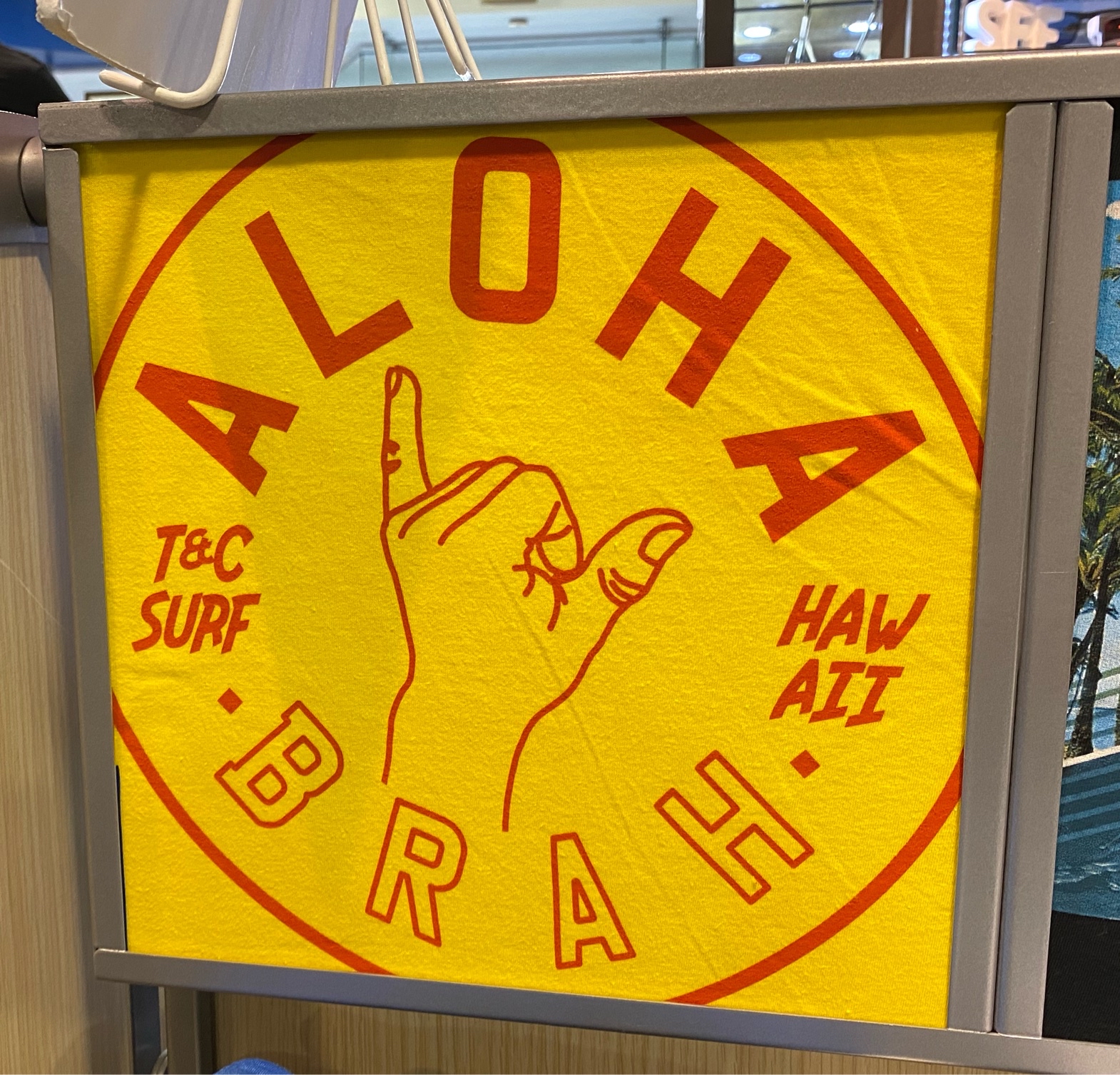
|
46074
|
|
United States
Honolulu
|
|
|
AJR - Check in #2. This picture shows the use of the Hawaiian phrase “Aloha” and Pidgin (?) version of “bro”. The intended audience would be apparel shoppers and it is a great way to promote local identity. However, with the image of a Shaka being exhibited on this shirt, I would say this product catches the eye of more tourists
|
Multilingual Hawaiʻi
|
|
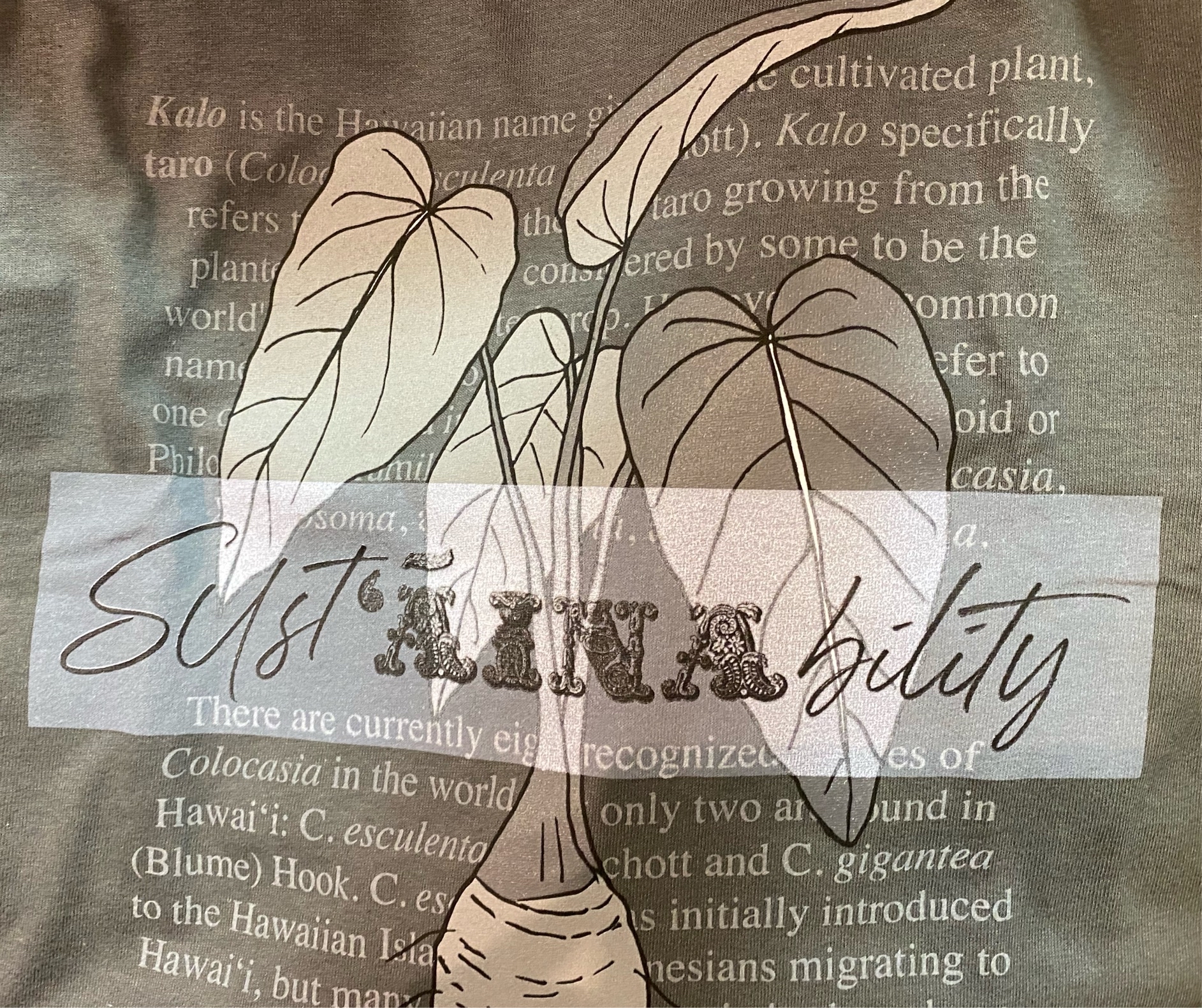
|
46075
|
|
United States
Honolulu
|
|
|
AJR - Check in #2. This picture shows the phrase “SustĀINAbility” in much bigger font than the English/Hawaiian description behind it. By doing so, it combines both English and Hawaiian but gearing the focus more towards the Hawaiian phrase of “Aina.” In my understanding, this phrase refers to having respect towards the land and all that it provides for us, therefore by putting these two words together it creates a Hawaiian claim on sustainability. I would say the intended audience is primarily locals as most tourists most likely don’t know what Aina means
|
Multilingual Hawaiʻi
|
|

|
46076
|
|
United States
Honolulu
|
|
|
AJR - Check In #2. As we see in this photo, the phrase “Lawai’a Krew”. I’m not so sure what Lawai’a means but I do believe it is a Hawaiian term. This picture was found in the T&C apparel store, therefore I would guess the intended audience is both locals and non-locals but locals are most likely to be drawn to this shirt
|
Multilingual Hawaiʻi
|
|

|
46077
|
|
United States
Honolulu
|
|
|
AJR - Check In #2. This picture exhibits both Hawaiian and English words to describe the names of these plants as well as the significance it has to Hawaii. I would say the intended audience of this sign is primarily tourists given that it was in the Ala Moana shopping center. My guess is that the purpose of it is to teach tourists more of the significance that plants have on Oahu both to the island and the people
|
Multilingual Hawaiʻi
|
|

|
46078
|
|
United States
Honolulu
|
|
|
EL-S Checkup #2 : Languages that are used on the sign is Hawaiian and Japanese. There are two Pualani, and one of them is bigger. I think the purpose of this is to catch people’s attention when they enter. The domain is at the international airport. I think what it’s trying to say is the locations of where people are welcoming others. I think Hawaiian is being used here because it’s to welcome them to the island.
|
Multilingual Hawaiʻi
|
|

|
46079
|
|
United States
Honolulu
|
|
|
EL-S Checkup #2 : Hawaiian is being used on the sign. The words are big and colored, and have a floral design on it. I think it’s big like that as just a reminder to workers of the airport. The audience would be the general public such as workers or people entering the airport. The domain as I said is the airport. The message is “aloha ‘oe” which means I love you in Hawaiian I believe.
|
Multilingual Hawaiʻi
|
|
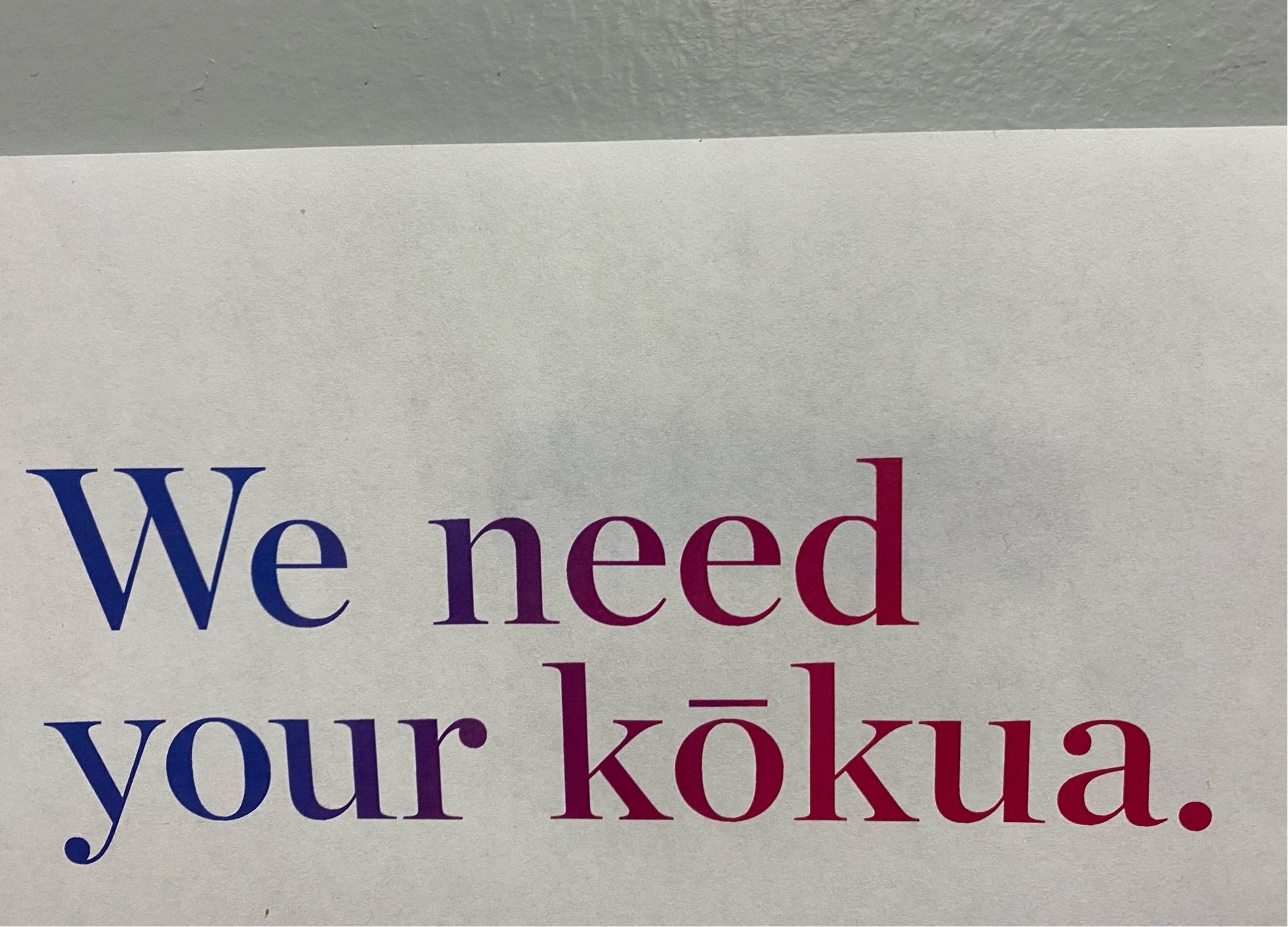
|
46080
|
|
United States
Honolulu
|
|
|
EL-S Checkip #2 : Languages used on this sign is English and Hawaiian. Languages presented all in the same way except Kokua is underlined. I think to emphasize kokua. The audience is general public. The domain is the airport. The sign is telling people we need your help. The sign is here to just let people know we need your help, it could be talking about anything.
|
Multilingual Hawaiʻi
|
|
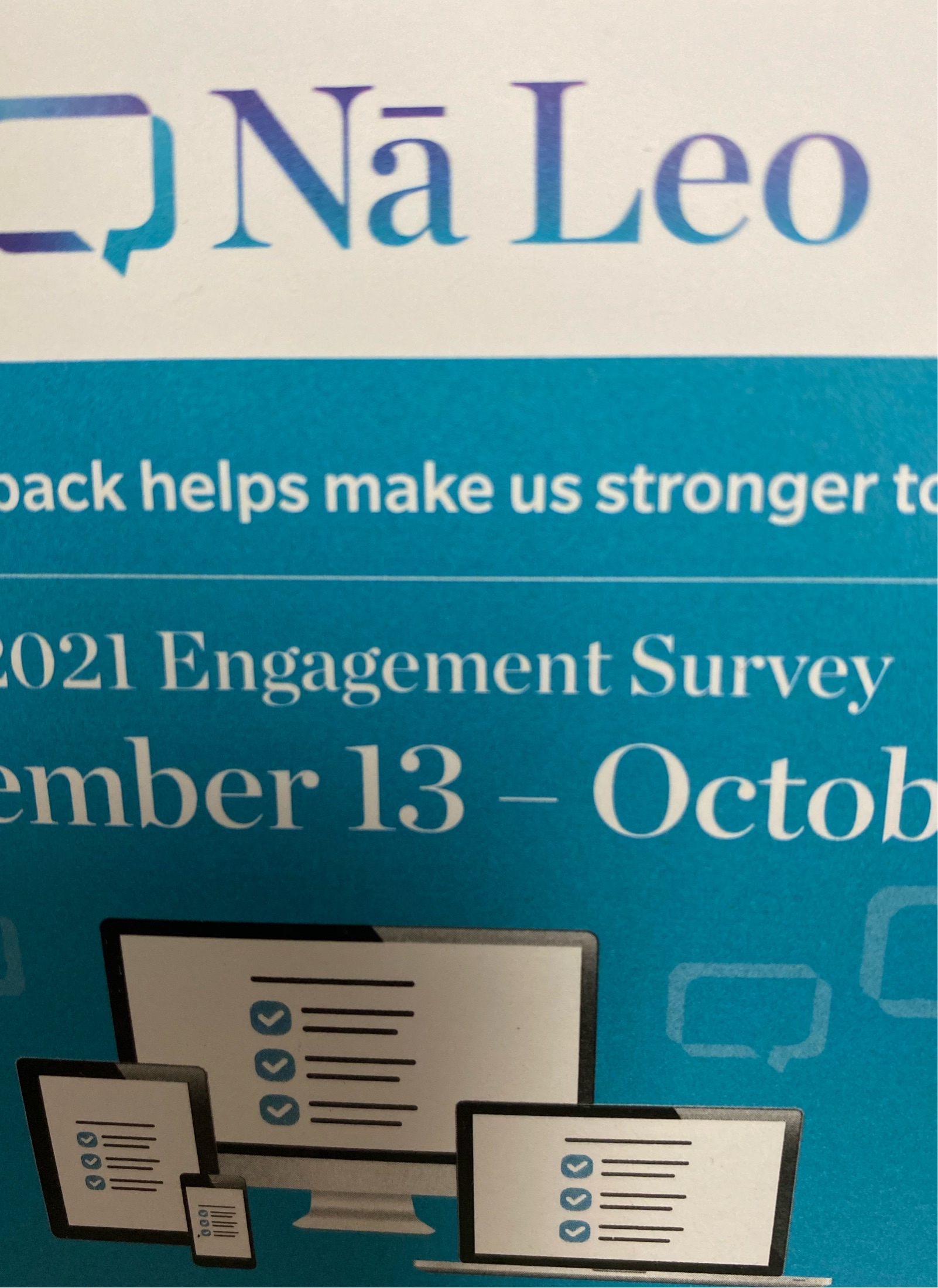
|
46081
|
|
United States
Honolulu
|
|
|
EL-S Check up #2 : Hawaiian and English are being used. The Hawaiian words are bigger than the English words. I think it’s to let people know what the survey is named. The audience is probably people coming in from the mainland to talk about their flight experience. The domain is work. The sign is trying to get people engage into a survey.
|
Multilingual Hawaiʻi
|
|

|
46082
|
|
United States
Pearl City
|
|
|
EL-S Checkup #2 : Pidgin is being used. All of the fonts are mostly the same size. The audience is for those who are grocery shopping. The domain is a grocery store. The sign is telling the people what kind of food that is being sold to them for what price.
|
Multilingual Hawaiʻi
|
|
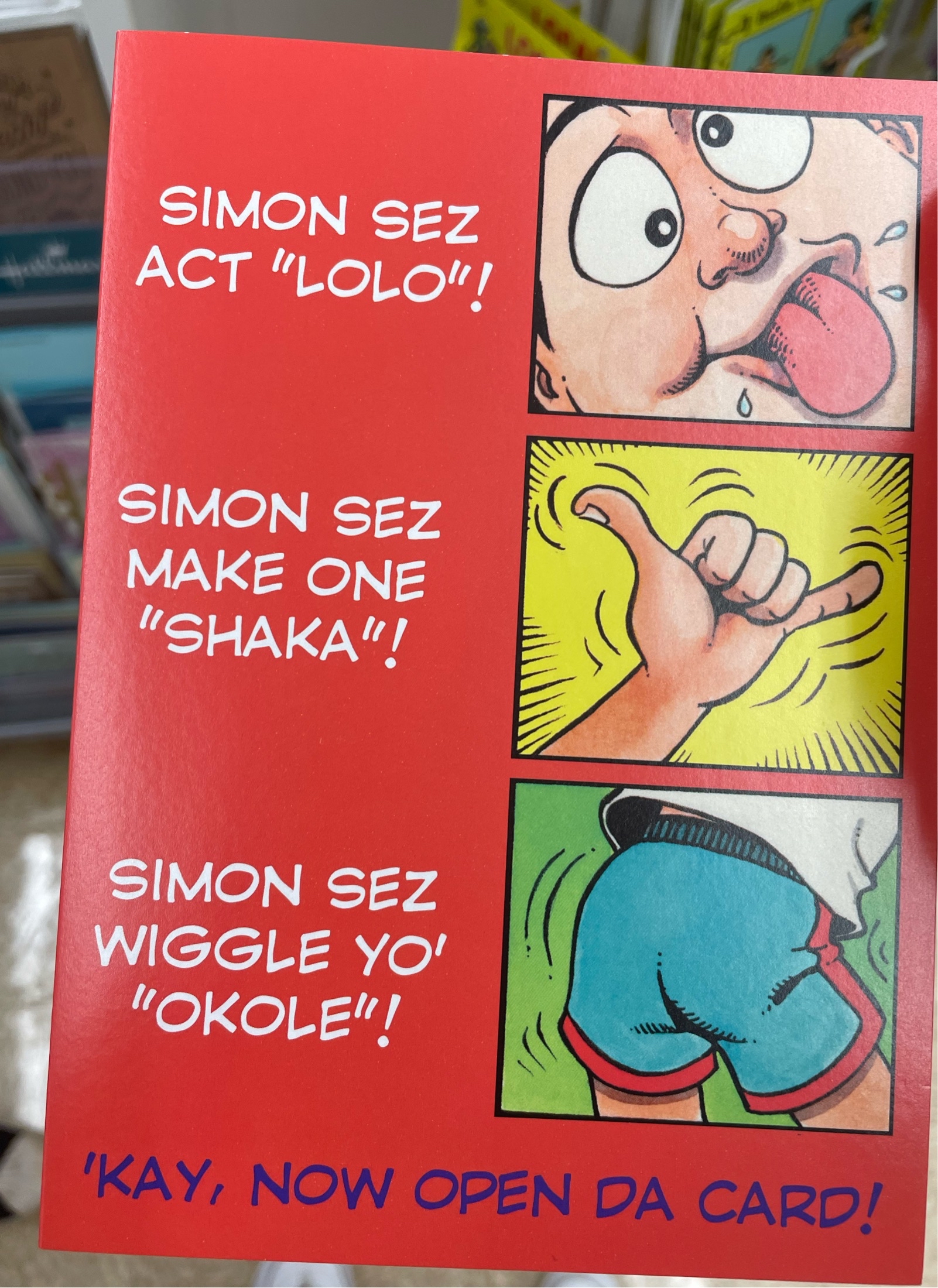
|
46083
|
|
United States
Aiea
|
|
|
EL-S Check up #2: Pidgin is being used on the card. All of the words are the same font and same size. The audience is those who are thinking of getting a family or friend a card for celebration. The domain is the general public. The card is just telling you some jokes, like you act crazy or shake your butt. Pidgin is used here to add topical humor.
|
Multilingual Hawaiʻi
|
|

|
46085
|
|
ʻAmelika Hui Pū ʻIa
Honolulu
|
|
|
—
|
Multilingual Hawaiʻi
|
|
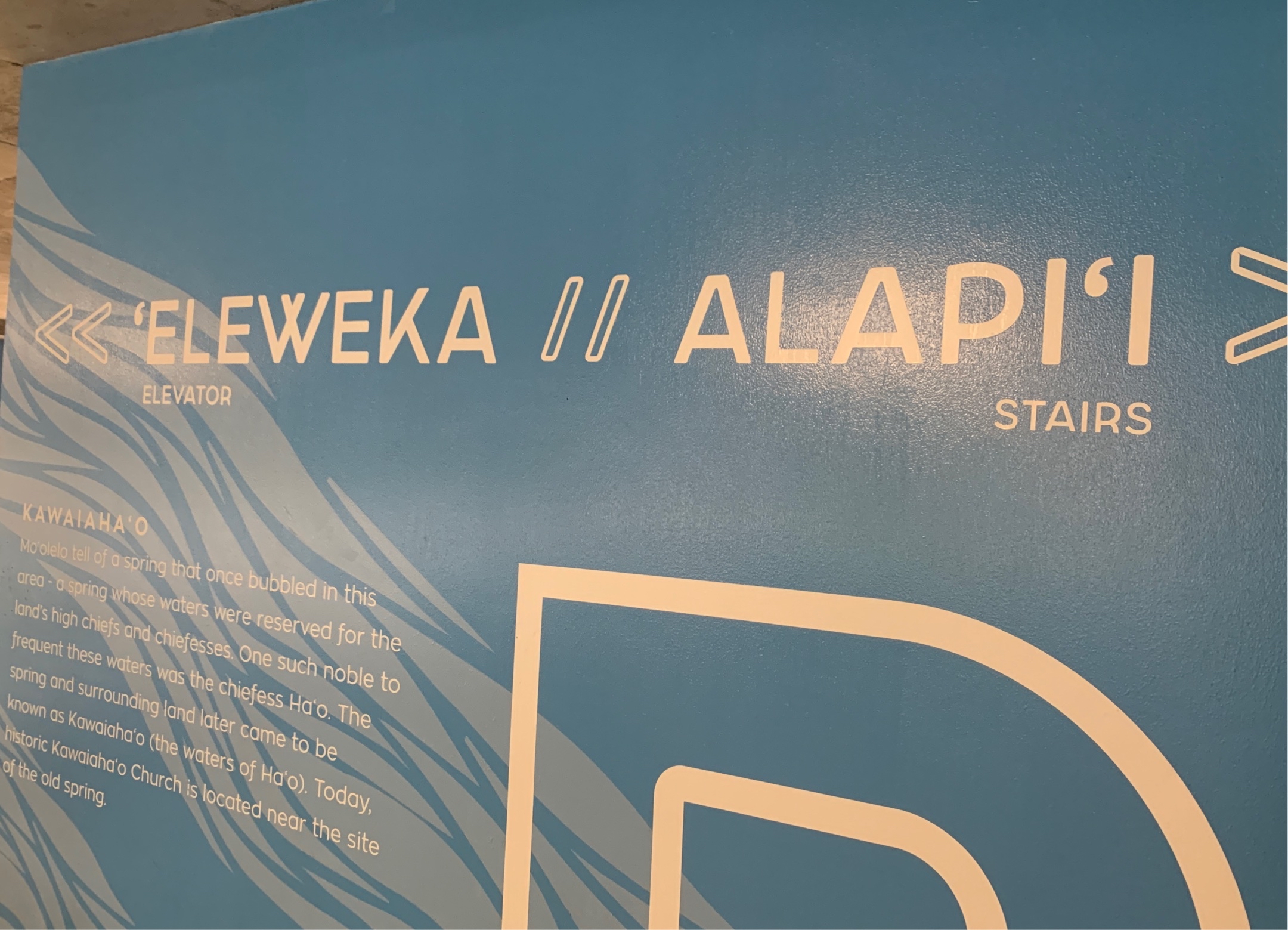
|
46086
|
|
ʻAmelika Hui Pū ʻIa
Honolulu
|
|
|
—
|
Multilingual Hawaiʻi
|
|
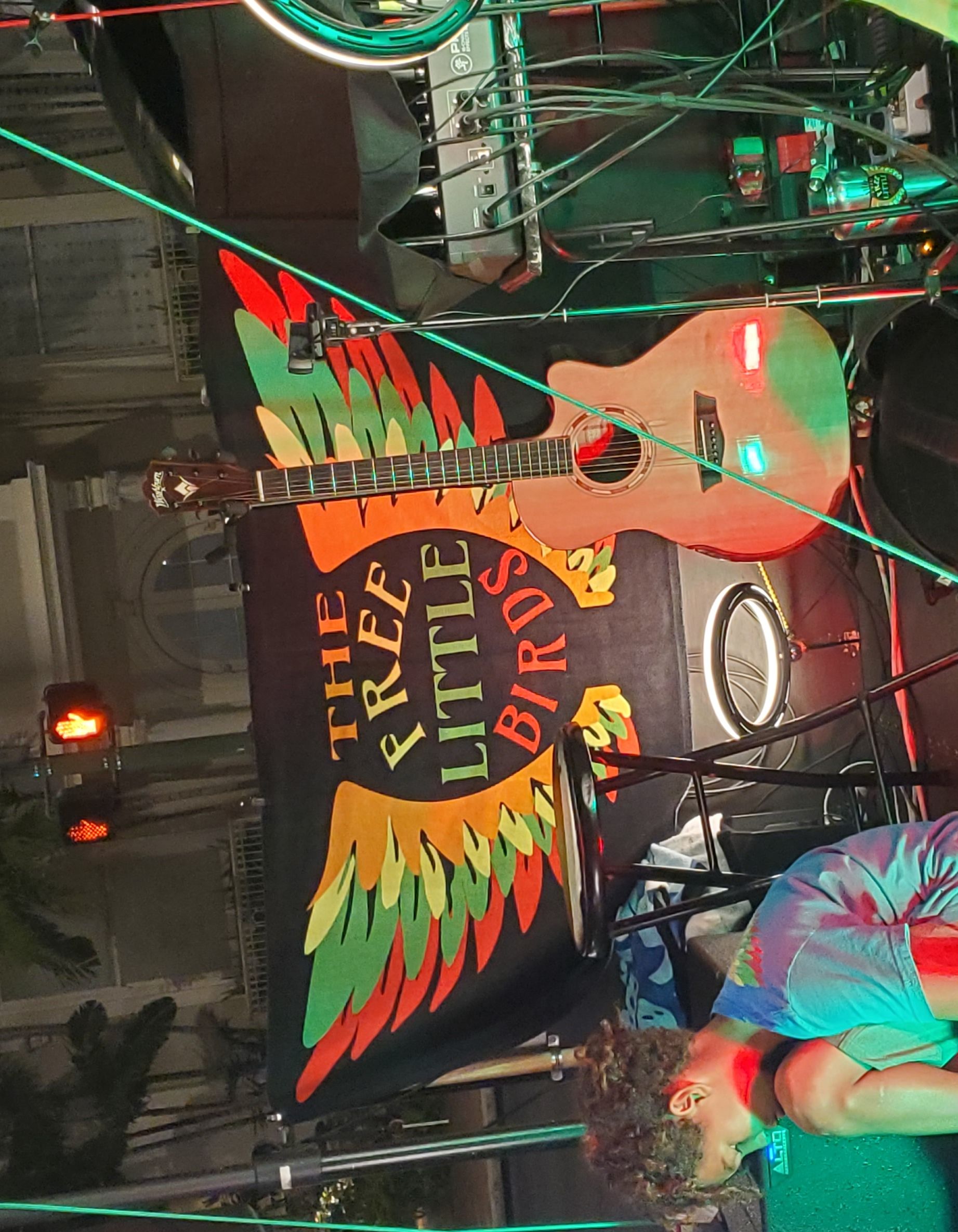
|
46141
|
|
United States
Honolulu
|
|
|
here pidgin is used by the Jawaiian band to relate more to the people
|
Multilingual Hawaiʻi
|
|

|
46142
|
|
United States
Honolulu
|
|
|
it's funny
|
Multilingual Hawaiʻi
|
|
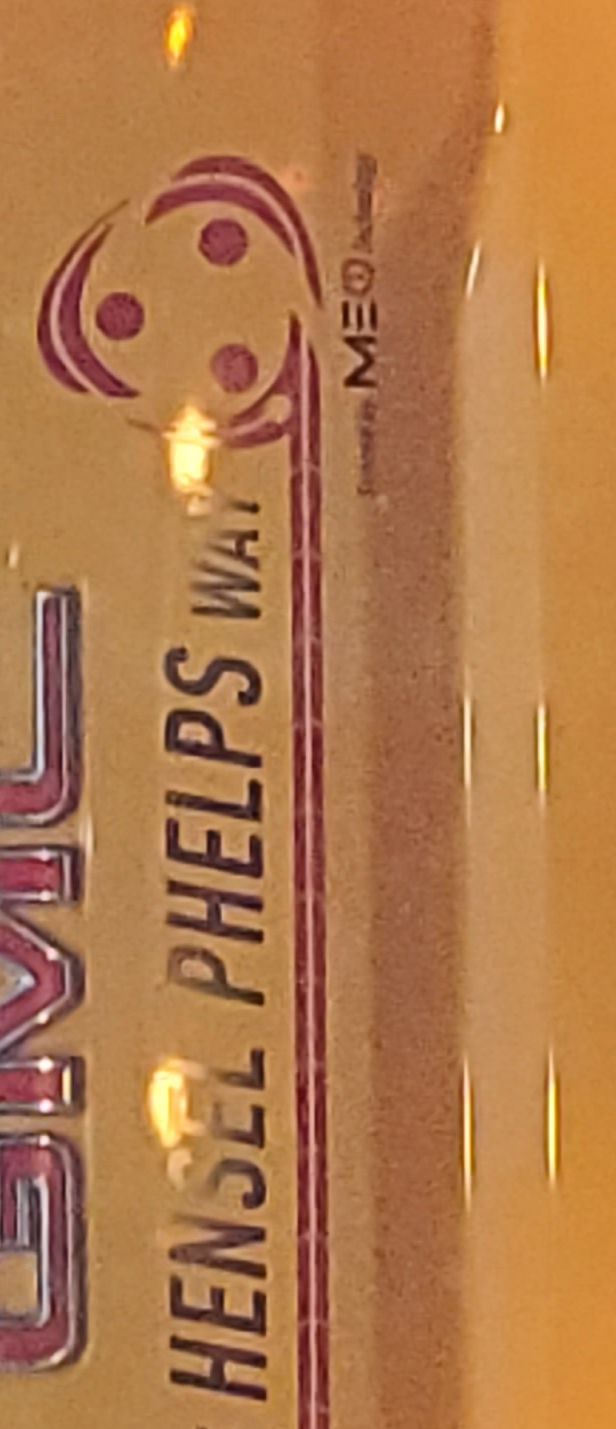
|
46143
|
|
United States
|
|
|
Hensel Phelps is a local construction company - KA
|
Multilingual Hawaiʻi
|
|
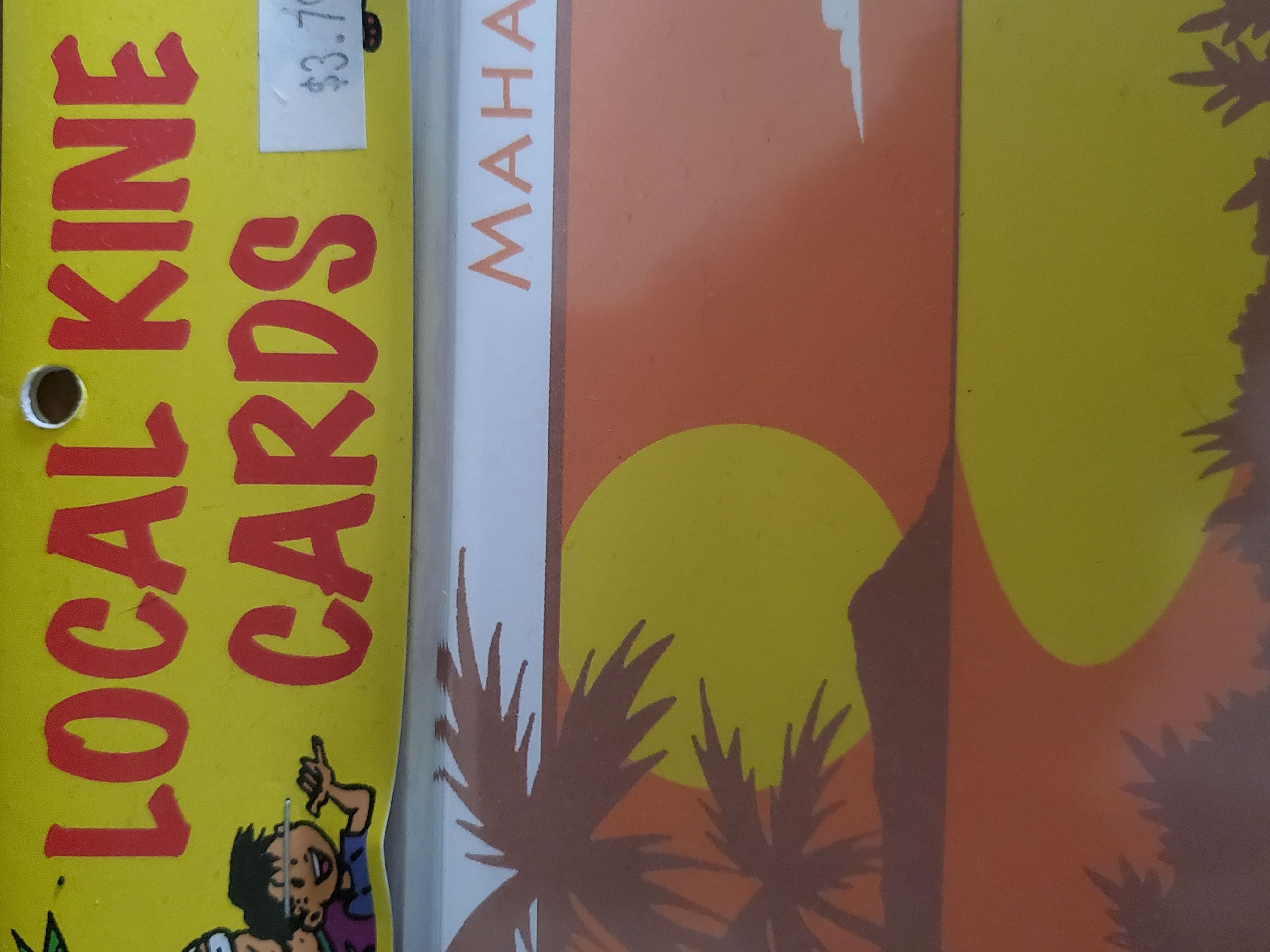
|
46144
|
|
United States
Kaneohe
|
|
|
it's local cards with local humor to appeal to a local audience
|
Multilingual Hawaiʻi
|
|
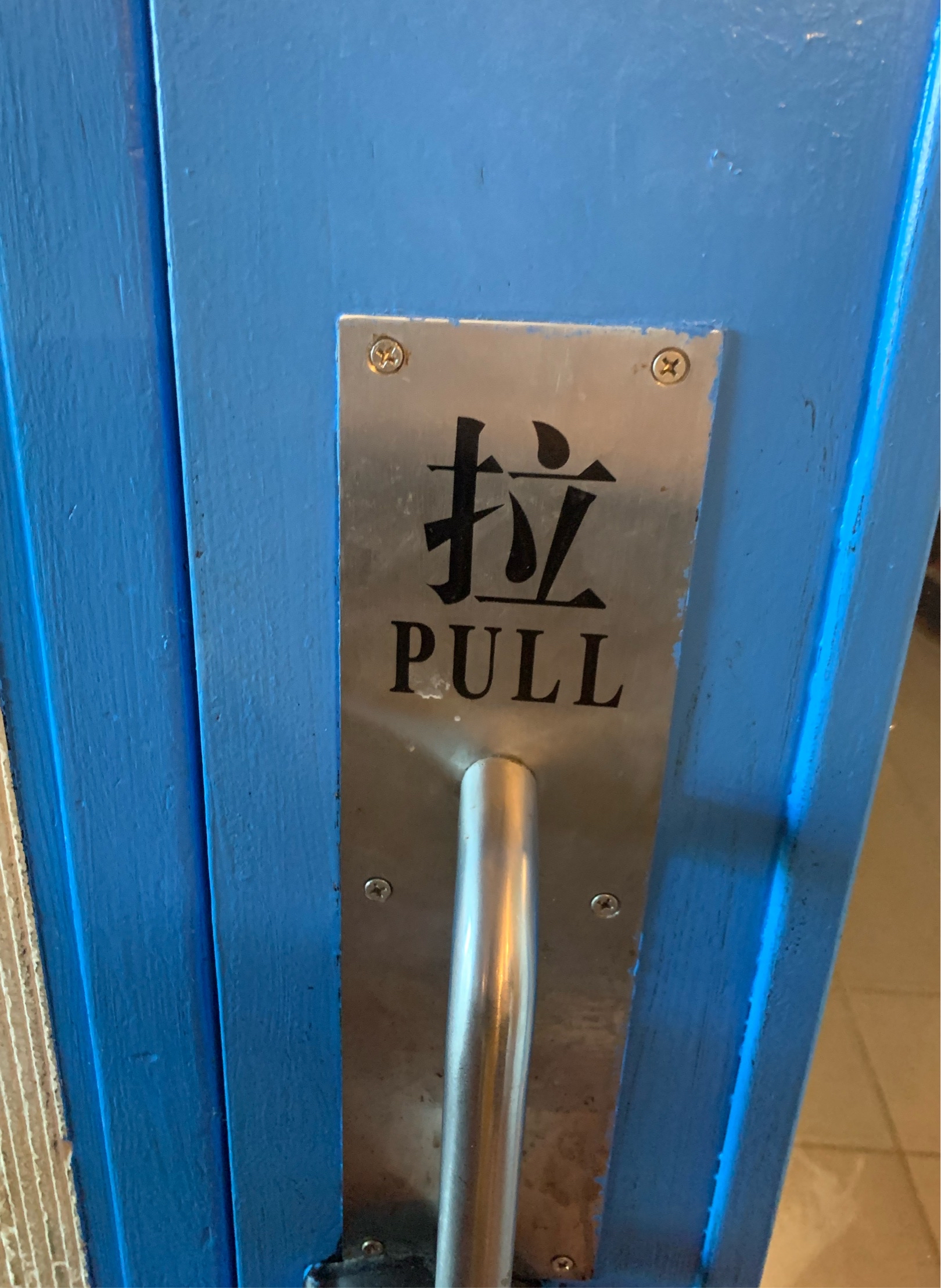
|
46145
|
|
ʻAmelika Hui Pū ʻIa
Honolulu
|
|
|
—
|
Multilingual Hawaiʻi
|
|

|
46157
|
|
United States
Honolulu
|
|
|
HC
Domain: Vinyl greeting mat outside a retail location
Purpose: Reminder to spread a positive message, and not germs
Audience: Store patrons
Printed on: Laminated 6"x3' vinyl mat
implied message: Spreading aloha is a common expression to share positive kinship with others, so as not to spread infectious diseases during a global pandemic
|
Multilingual Hawaiʻi
|
|
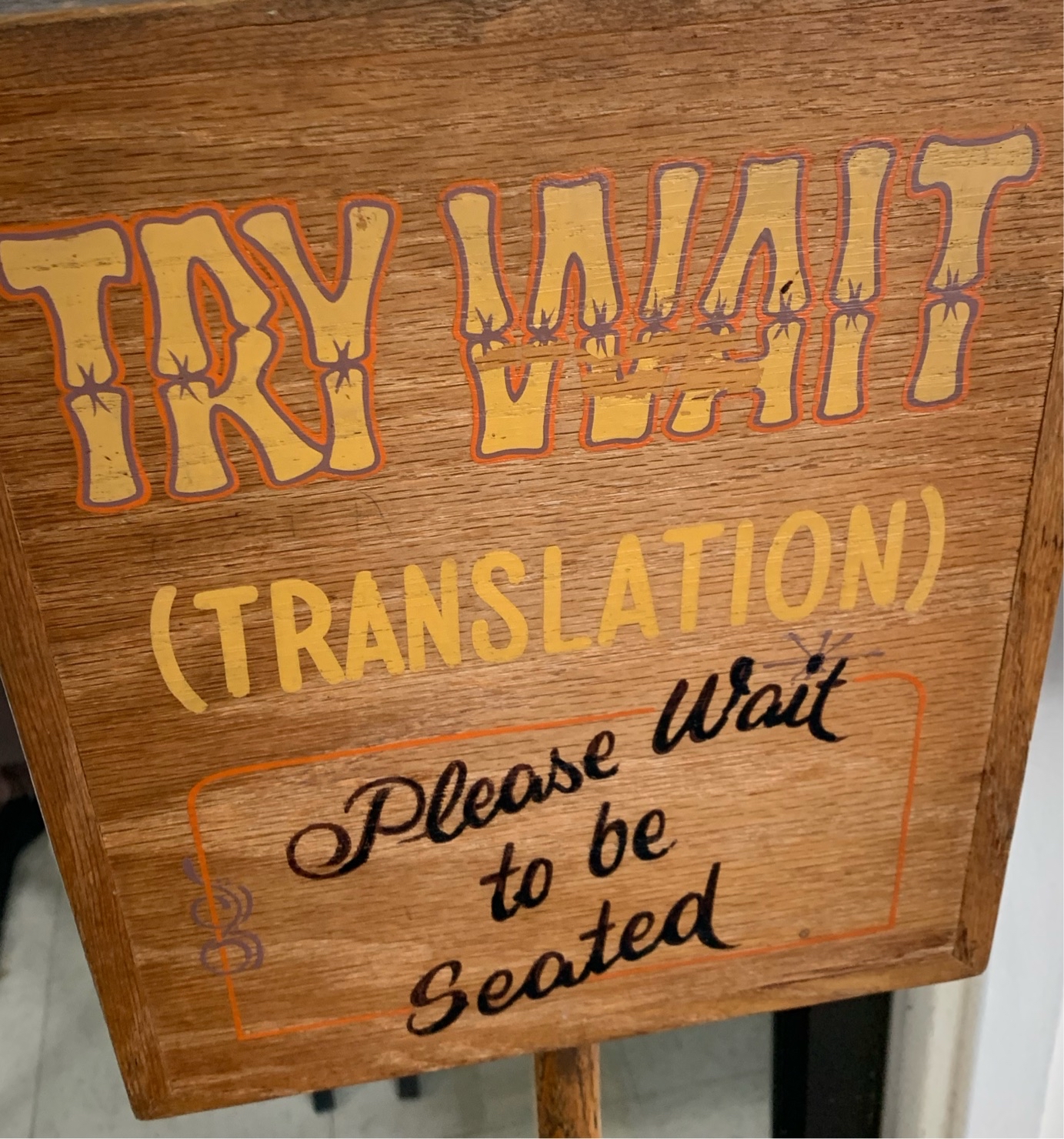
|
46163
|
|
United States
Honolulu
|
|
|
The sign in the picture has Pidgin and English, it’s on a wooden sign outside a restaurant to communicate to the patrons to have patience waiting to be seated.
-NIP
|
Multilingual Hawaiʻi
|
|